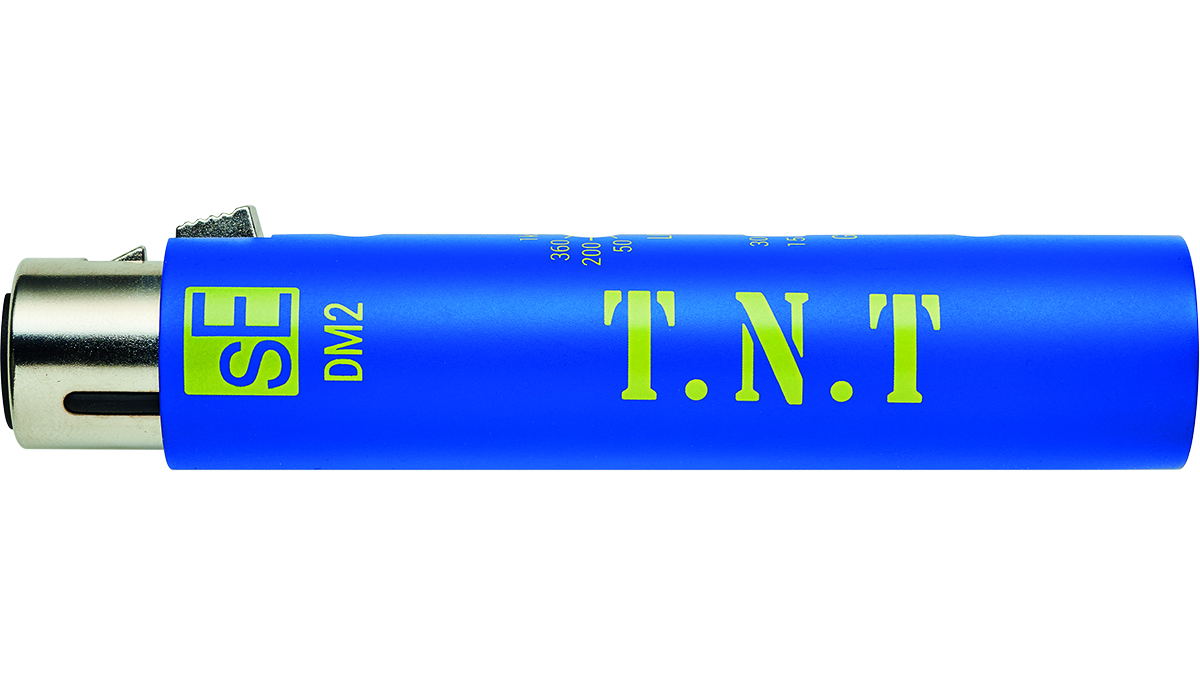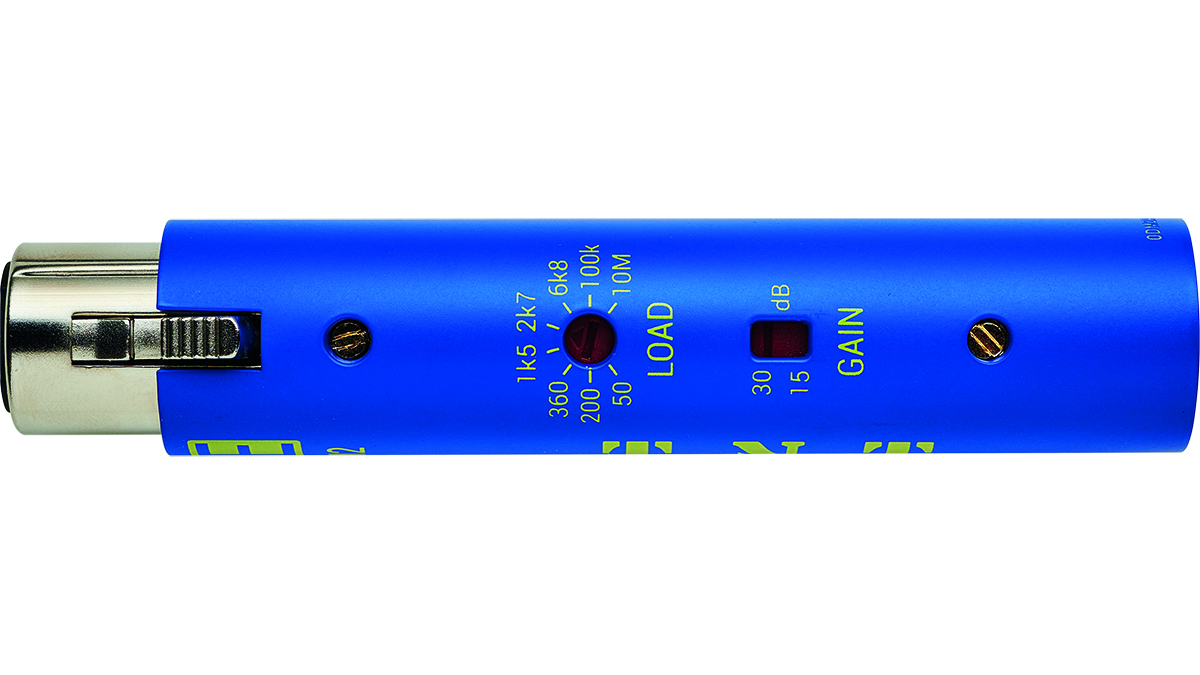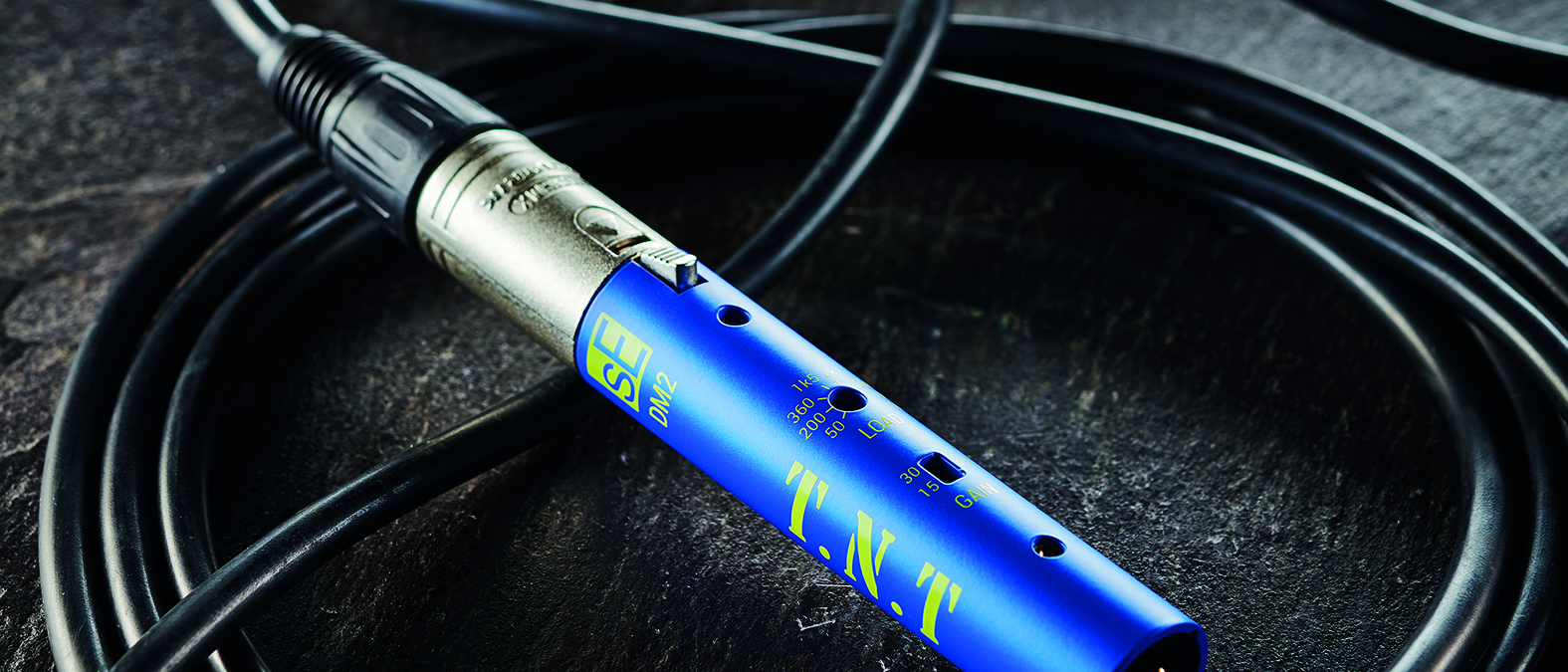MusicRadar Verdict
Breathes fiery new life into a passive mic ravenous for more gain, and its varied impedance settings reveal the character of a ribbon mic.
Pros
- +
Provides copious amounts of clean gain.
- +
Generous variety of impedance settings.
- +
Excellent build quality.
Cons
- -
Needs to be attached directly to the mic for best results.
MusicRadar's got your back
sE Electronics DM2 TNT: What is it?
First sE Electronics gave us the DM1 Dynamite, an inline preamp that resembles a red stick of, well, dynamite. Then there was the NEOM USB microphone, with its gain dial that goes to 11, and now we have the DM2 TNT that looks like another stick of high explosive, this time in fetching Cobalt blue. It may look like a joke – we particularly like the faux fuse that pokes out of the lid, and the stencilled T.N.T lettering – but sE are deadly serious about this somewhat explosive product.
Like the DM1 it’s a low noise, active, inline preamp intended to address two common problems for owners of passive dynamic and ribbon microphones – insufficient gain and impedance compatibility issues.

sE Electronics DM2 TNT: Performance and verdict
Ribbon and dynamic mics work very differently but both have low sensitivity components (a ribbon mic doesn’t have a capsule, as such) that need a significant amount of clean gain to output a signal of sufficient strength. Turn the gain right up on an entry-level interface and you’ll just end up with a noisy, lacklustre recording. The DM2 TNT, and the DM1, rectify this by providing up to +32dB of glorious, noise-free gain.
Ribbon mics in particular need a high impedance preamp to sound their very best. A preamp’s load impedance should be at least five times higher (some say ten) than your mic’s output impedance. Give it less and you’ll rob your ribbon of its low-end performance and some top-end response (ie, it’ll sound rubbish).

Fortunately, the DM2 has eight impedance load settings that vary from 50 ohms to 10 mega ohms, which is probably higher than you’ll ever need. If you own a dynamic mic, impedance isn’t quite as critical, but you can still use these load settings to creatively shape your tone. It’s like having multiple mics in one.
The DM2 is beautifully constructed in an all-metal housing that’s built to take a battering. It’s a tiny device that’s less than 10cm tall and weighs just 80g. Which is just as well, because sE recommends it’s plugged directly into your microphone to reduce the possibility of noise creeping in through any additional cabling. This isn’t really an issue for studio use but, small and attractive though it is, extending a mic by almost 10cm may be an unacceptable look for some YouTubers and live performers.
The features are few, but powerful. There’s a tiny switch to select +15dB or +30dB of gain and a weeny rotary dial to dial in one of the indented 50, 200, 360, 1.5k, 2.7k, 6.8k, 100k and 10M ohms settings. We can’t overemphasise how small these controls are – suffice to say that sE Electronics provides a diddy miniature screwdriver to flip between settings.
We tried an SM7B and the effect of this preamp was no less than transformative
Operating the DM2 TNT couldn’t be easier. Just plug it straight into your dynamic or ribbon mic and hook the other end up to a 48V phantom power source. Selecting a setting is fiddly, so it’s not going to be something you do on the fly. At least there’s no risk of changing your chosen settings inadvertently though.
While we’re on the subject of mishaps, the DM2 TNT will obviously protect your otherwise defenceless ribbon mic from being accidentally fried by phantom power, which is a minor bonus but a very good one.
We tried an SM7B with a variety of inexpensive interfaces, and the effect of this preamp was no less than transformative. In theory, if you don’t need a whole +30dB of clean gain, selecting +15dB should give quieter results, but in practice we noticed little difference. What was evident was that the SM7B instantly became usable. Quiet and well-behaved with no adverse effect on tonal character but a huge reduction in noise.
Playing with the impedance load was interesting. As expected, choosing a low setting made our mic sound like it had undergone a charisma bypass. Similarly, selecting any of the very high settings restored its full personality. It’s the middle numbers where the tone-shaping magic happens, but the effect between one setting and the next is quite subtle. Nevertheless, the DM2 TNT does give you the opportunity to best match a mic’s character to your talent, without having to destructively play around with EQ.
MusicRadar verdict: Breathes fiery new life into a passive mic ravenous for more gain, and its varied impedance settings reveal the character of a ribbon mic.
sE Electronics DM2 TNT: The web says
"The DM2 is a worthy and welcome addition to sE Electronics’ ‘explosives’ family and, although slightly more expensive than its stablemate, the improved performance, additional gain options, and selectable impedance facilities easily justify the extra cost."
Sound On Sound
sE Electronics DM2 TNT: Hands-on demos
sE Electronics
Brian Lupiya
Mad Steex
sE Electronics DM2 TNT: Specifications
- KEY FEATURES: Impedance: 135 Ohms, Frequency range: 10Hz-120kHz (-0.3dB), Gain: 15dB/30dB, Max output level (0.5% THD): 9.5dBV (3.0V), Output noise level: 1µV @ 15dB/6.6µV @ 30dB, Connectivity: 3-pin male/female XLR, Power: 48V phantom, Dimensions: 19 x 96mm, Weight: 80g.
- CONTACT: sE Electronics
When Simon's childhood classical guitar teacher boasted he 'enjoyed a challenge', the poor man had no idea how much he'd underestimated the scale of the task ahead. Despite Simon's lack of talent, the experience did spark a lifelong passion for music. His classical guitar was discarded for an electric, then a room full of electrics before Simon discovered the joys of keys. Against all odds, Simon somehow managed to blag a career as a fashion journalist, but he's now more suitably employed writing for MusicRadar and Guitar World. When not writing or playing, he can be found terrifying himself on his mountain bike.
“Excels at unique modulated timbres, atonal drones and microtonal sequences that reinvent themselves each time you dare to touch the synth”: Soma Laboratories Lyra-4 review
“I used everything I knew about music”: How Green Day exceeded expectations with their most ambitious song
YouTube just added AI tools that makes musicians, library music and video editors redundant











